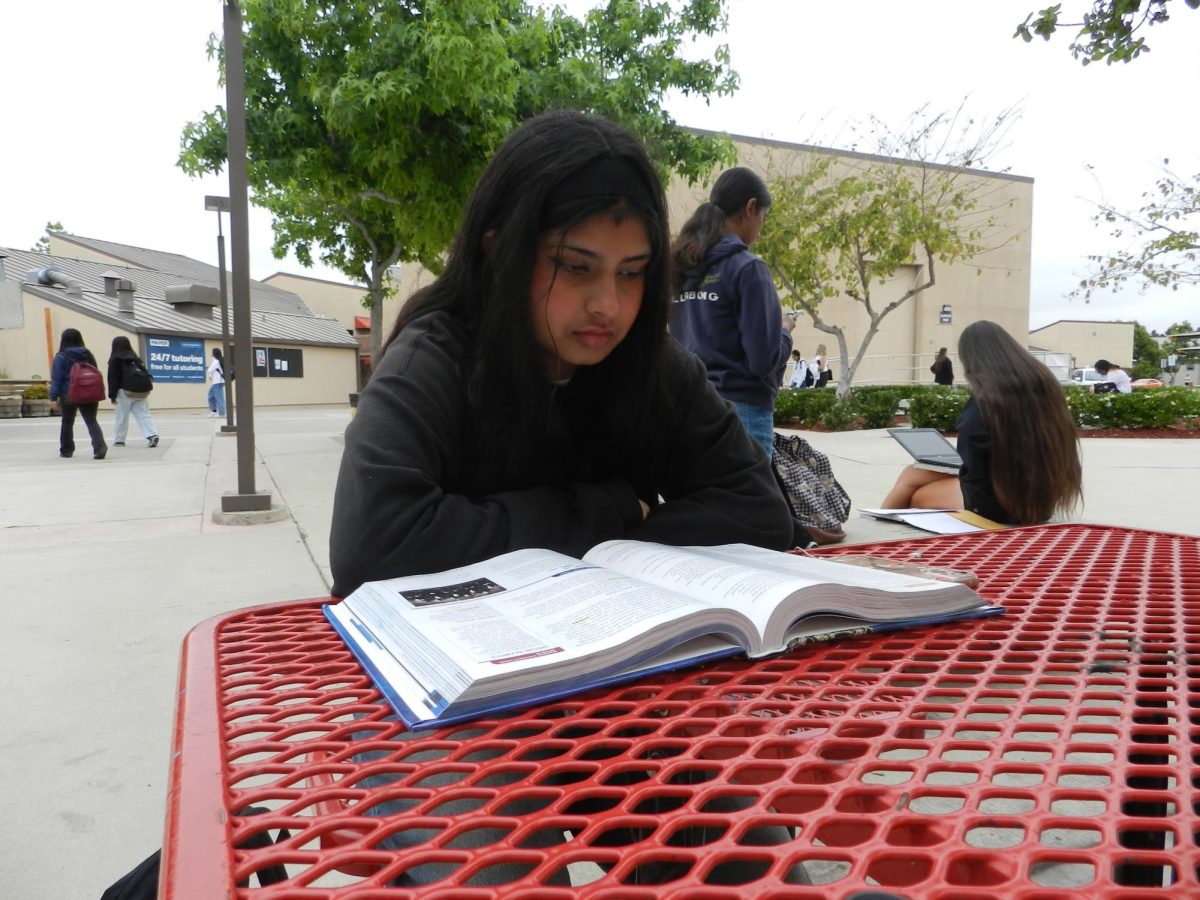As the College Board continues rolling out digital versions of Advanced Placement exams, students are beginning to form strong opinions on whether the shift from paper to screen is a step forward or just another complication in an already high-pressure testing season.
For years, AP exams have meant sharpening pencils, bubbling scantrons and scribbling essays by hand under the ticking clock. But as more subjects transition to online tests, students are adjusting to a new kind of test environment, one that comes with both convenience and concerns.
At Woodbridge High School, junior Seline Cheung said she supports the change. “Typing essays is just faster and easier to manage,” Cheung said. “Plus, the digital format feels more natural since everything we do in school is already on laptops.”
Cheung said she appreciates how the digital layout helps reduce small mistakes, like misbubbling answers or forgetting materials. While she acknowledges the risk of tech issues, she believes the benefits outweigh the drawbacks.
Senior Emma Woolf agreed, adding that one of the biggest advantages is time management. “Digital testing allows each student to see the countdown clearly on their screen, which I think really helps with keeping track of time,” Woolf said. “Compared to traditional testing, it literally feels like I have more time when doing it digitally. It’s also much easier for exams that require a lot of writing.”
But not everything has gone smoothly. Woolf noted technical problems with internet connectivity during the testing process. “Our Wi-Fi system needs some work,” Woolf said. “With so many students trying to submit their test at once, some computers lag behind. I lost connection waiting for the start code for over 15 minutes.”
Despite these issues, the new format hasn’t significantly changed the way Woolf studies. “Maybe the only difference would be for writing-heavy tests—students can practice typing their essays rather than handwriting them,” Woolf said. “Otherwise, it’s the same.”
She also expressed frustration with exams that require both digital and handwritten components. “If I could change one thing, I would get rid of hybrid testing altogether,” Woolf said. “It really hurts students to have to do the MCQ digitally while doing the FRQ on paper. It makes it hard to mark up questions or work things out efficiently.”
Senior Benjamin Shih noted similar concerns with exams that involve students to do handwritten work, while simultaneously interacting with the digital exam.
“For math, it’s harder to use your calculator or scratch paper when you can’t mark things up easily,” he said. Despite this, Shih supports the digital shift overall, calling it a natural evolution of testing at schools like Woodbridge. “A lot of the testing here is already moving to a more modern digital platform,” Shih said. “So I think that it is a good move. For example, in English, it makes it easier to highlight the text and stuff, so I think in terms of that, it makes it better.”
Shih also said digital testing makes the experience feel less intimidating. “Paper tests make it seem more serious,” Shih said. “With digital, it feels kind of unreal, so I’m less stressed.”
While Shih believes Woodbridge is prepared for digital testing, he raised equity concerns for students without stable technology at home.
“It definitely would make it less accessible to people who don’t have stable internet or tech at home,” Shih said. “College Board needs to reach out more to those students and provide resources like hotspots to make it more equitable.”
If he could make one change, Shih said it would be to allow paper formula sheets for digital exams. “The online formula sheets were absolutely hell to deal with,” Shih said. “They blocked questions and answer choices and were just super annoying to work with.”
As more AP exams go digital, students say they’re ready to adapt—but they hope the College Board is listening to feedback as they navigate the new format.









